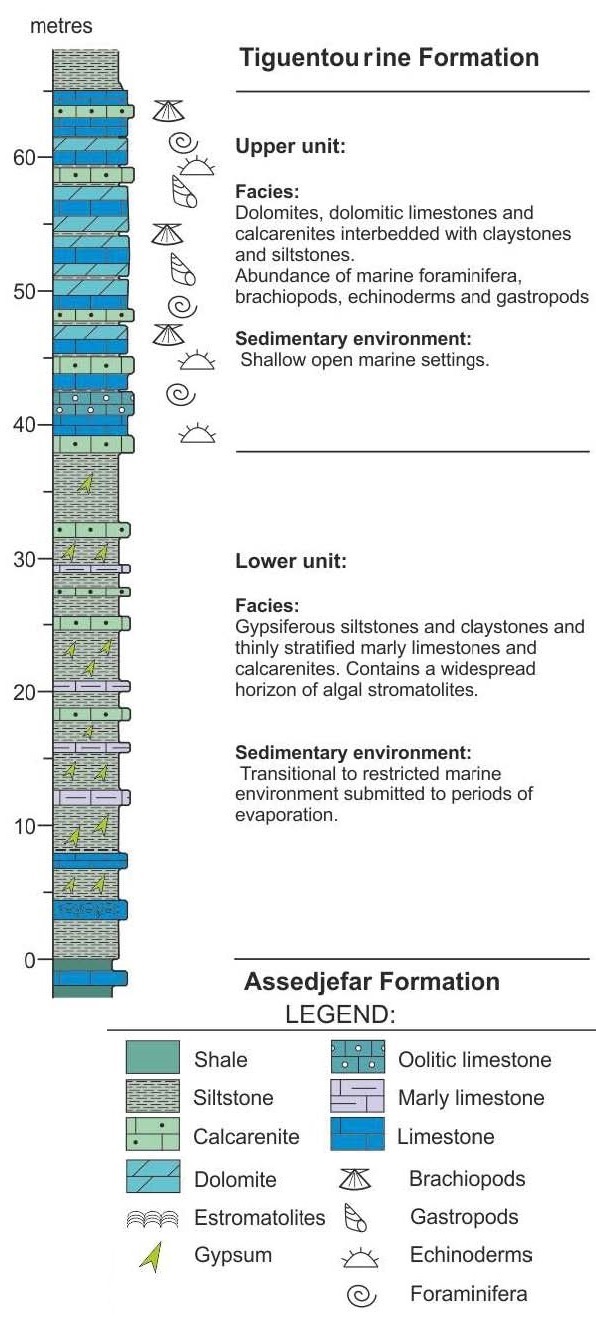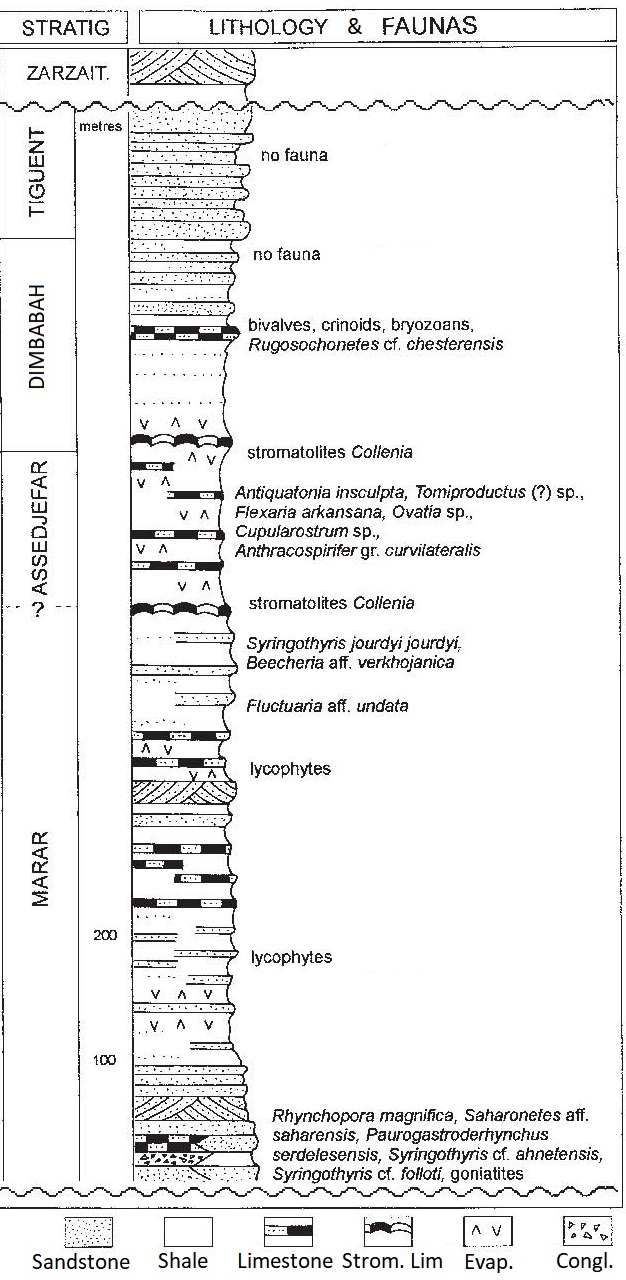Dimbabah Fm
Type Locality and Naming
A succession in a well in Hasi Dimbabah (28°30′N, 11°33′E) in Hamadat Tanghirt area in south Libya (Lelubre, 1952; Hallet, 2002) (Fig. 1). Named after Hassi Dimbabah well in southern Libya.
[Figure 1: Stratigraphic column of the Dimbabah Formation at the Type Locality in Libya (Source: Shalbak, 2015]
References: Lelubre, 1952; Plauchut & Faure, 1959; Jacqué, 1963; Lababidi et al., 1985; Mergl et al., 2000, 2001; Tawadros, 2011; Shalbak, 2015; Hallett, 2002, 2016.
Synonym: Dambabah (old spelling); Calcaires à Collenia; the former spelling of the formation was "Dembaba". The spelling was modified to its current form by Hallet (2002) after verifying the official name records of localities in Libya
Lithology and Thickness
Djado Basin: Built-up of red and white shales with few black limestones in the lower half of the unit. The upper half has a terrestrial origin and is unfossiliferous (Jacqué (1963) mentions that in Madama, the Carboniferous ends with about 100 m of unfossiliferous continental sandstones). Several evaporite levels with massive gypsum and sparse dolomite horizons are present. Jacqué (1963) mentions two horizons of stromatolites that can be followed for hundreds of kilometers from the Fezzan (Libya) to Chad, passing through Niger. Continental cross-bedded sandstones mark the final regression of the sea with chalcedonite, paleosols and red shales. Its thickness is 65 m at the Type Locality and 80-120 m at the Djado (Fabre, 2005). The maximum cumulative thickness of all Carboniferous units in the Djado Basin (Marar Fm, Assedjefar Fm and Dimbabah Fm), known from surface and subsurface, is 1000-1100 m (Figures).
[Figure 2: Lithostratigraphy column of Dimbabah Fm]
Relationships and Distribution
Lower contact
Conformable contact onto the underlying Assedjefar Fm
Upper contact
Disconformable contact with the overlying Tiguentourine Fm
Regional extent
GeoJSON
Fossils
Type Locality: Rich fauna of foraminifera, conodonts, corals and brachiopods. Jacqué (1963) also adds gastropods and Nautiloids. Djado Basin: The formation yielded an assemblage consisting of the chonetid Rugosochonetes cf. chesterensis (Weller) associated with Moscovian foraminifers (Mergl & Massa, 2000).
Age
Depositional setting
Sabkha, lagoonal and continental. The lagoonal and continental episode during the Moscovian closed the Carboniferous in the Djado Basin. The Carboniferous Sea retreated after Moscovian time.
Additional Information

